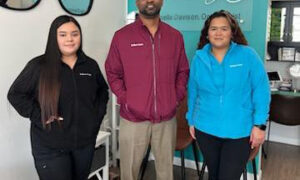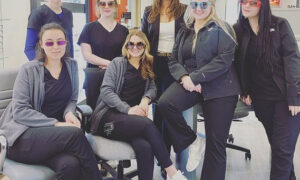June 21, 2017
Jennifer Lyerly, OD, an associate at Triangle Visions Optometry in Cary, N.C., says you can accommodate the 21st century patient by having lifestyle conversations in the exam room, using large display screens to educate the patient and make them a participant in their own care, and by telling stories about the products you sell in your optical.
ADD VALUE. Have lifestyle conversations in the exam room. Ask the patient specific questions about their eyes, such as which visual challenges they experience most frequently, and how their eyes feel at the end of the day.
USE LARGE DISPLAY SCREENS. Show patients what you are seeing through your instruments by using display screens in your exam room. The patient will be more engaged in the exam and more inclined to ask you questions about their eye health.
PRESCRIBE MULTIPLE PAIRS. Talk about light sensitivity and the danger of UV and blue light. Point out how the patient is probably squinting more than they realize, which contributes to the development of wrinkles around their eyes, in addition to potentially impacting their eye health. Prescribe adaptive lenses for their everyday glasses, along with sunglasses and computer glasses.
TELL PRODUCT STORIES. Use signage and displays to tell the stories of your products. For example, include a picture and information about how a particular frame line is handmade. Or include information about the material a frame is made of, along with photos or promotional materials from the manufacturer. Visually tell the story first, so the patient’s curiosity is sparked, and the optician can then fill in the details.
PERFECT HANDOFF. Walk every patient to the optical after their appointment. Include even those who have said they are not interested in purchasing eyewear, so they can see their options, and speak with your opticians. If nothing else, they may opt for a pair of plano sunwear.
INVOLVE WHOLE FAMILY. Ask patients about their children. And if you notice a child immersed in a game on a mobile device, ask the parent how often the child uses the device. When the parent inevitably asks if it’s bad that their child spends so much time using the device, you can talk about the potential dangers of blue light, and the need to bring the child in for regular eye exams.
Jennifer Lyerly, OD, is an associate at Triangle Visions Optometry in Cary, N.C. To contact her: jelyerly@gmail.com

























